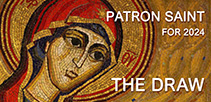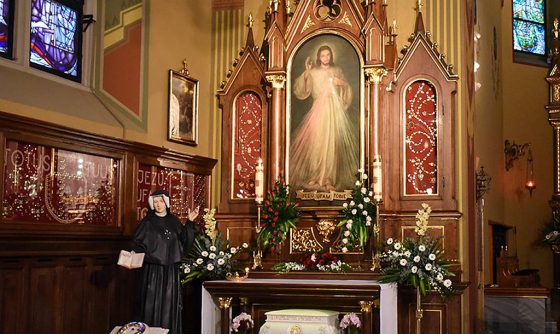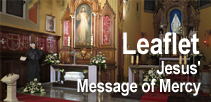“In the evening, when I was in my cell I saw he Lord Jesus clothed in a white garment”, St. Faustina wrote in her Diary. “One hand was raised in the gesture of blessing, the other was touching the garment at the breast. From beneath the garment, slightly drawn aside at the breast, there were emanating two large rays, one red, the other pale. In silence I kept my gaze fixed on the Lord; my soul was struck with awe, but also with great joy. After a while, Jesus said to me: ‘Paint an image according to the pattern you see, with the signature: Jesus, I trust in You. I desire that this image be venerated, first in your chapel, and [then] throughout the world’” (Diary, 47). The event took place in St. Faustina’s cell at the Plock convent of the Sisters of Our Lady of Mercy in the Old Market on February 22, 1931. The first Divine Mercy image was painted in Vilnius in 1934 under the guidance of Sister Faustina herself in the studio of Eugeniusz Kazimirowski and exposed for public veneration for the first time at the Gate of Dawn in 1935. Since then, a number of images have been created. The miracle-famous Divine Mercy image by Adolf Hyła, found in the convent chapel of the Sisters of Our Lady of Mercy at the Shrine of Divine Mercy is the best known one. The painting was created under the guidance of the Mercy apostle’s Krakow spiritual director, Fr. Józef Andrasz, S.J., who dedicated it on the Feast of Mercy, April 16, 1944. It was this image that fulfilled the words of Jesus spoken to St. Faustina at the first revelation: I desire that this image be venerated, first in your chapel, and [then] throughout the world. Not only pilgrims from around the world who physically arrive at this holy place can pray in front of this image, but also online visitors viewing our live broadcasts and the high quality presentation of the image at www.saint-faustina.org.
















